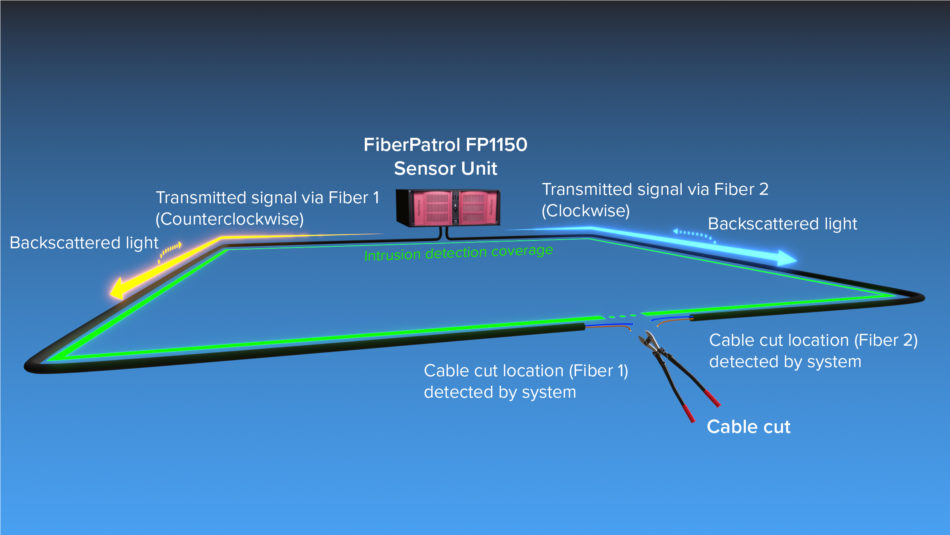The Ultimate Overview to Fiber Optic Security Systems for Your Business
In an age where security worries are extremely important for organizations, comprehending the ins and outs of fiber optic technology can be transformative. This guide details exactly how integrating fiber optic safety systems not only improves data defense yet also uses advantages like resistance to disturbance and real-time tracking abilities. As organizations review their security needs, it becomes essential to take into consideration the setup process and the most recent developments in the area. What specific variables should be prioritized when picking the ideal system, and just how can businesses ensure they make one of the most informed options?
Recognizing Fiber Optic Technology

The core of a fiber optic cable television is composed of a slim glass or plastic facility, surrounded by a cladding layer that mirrors light back into the core. Single-mode fibers are designed for long-distance transmission, while multi-mode fibers are appropriate for much shorter ranges, commonly used within buildings.
Optical fiber are not only faster but additionally a lot more safe and secure than conventional wiring. Their inherent resistance to electromagnetic disturbance and the difficulty of using the signal without detection make them a preferred choice for businesses prioritizing information integrity and safety and security. As organizations progressively depend on safe and effective interaction systems, understanding fiber optic innovation becomes vital for educated decision-making.
Key Advantages of Fiber Optic Protection
When thinking about protection options for a service, the benefits of fiber optic systems are specifically engaging. Fiber optic modern technology offers exceptional data transmission rates and bandwidth ability, making it excellent for managing high-resolution video feeds from monitoring cams. This ability makes certain that safety workers receive real-time information, boosting total response times to possible safety and security threats.
Furthermore, fiber optic cords are naturally immune to electromagnetic interference, which can compromise the integrity of standard copper-based systems. This resistance ensures that the information transferred continues to be protected and undisturbed, offering a more dependable protection framework. Additionally, fiber optics are much less vulnerable to physical damages, as they are made from glass instead of steel, reducing maintenance expenses and downtime.
Fiber optic systems supply enhanced cybersecurity attributes, consisting of file encryption abilities that secure delicate information from unauthorized gain access to. Collectively, these benefits make fiber optic protection systems a robust selection for companies seeking to enhance their safety and security procedures.
Setup Refine and Considerations
Thinking about the complexities included, the installment procedure of fiber optic security systems calls for cautious preparation and implementation. The first step entails a detailed site evaluation to recognize optimal places for cabling and equipment. This analysis ought to think about environmental factors, existing framework, and potential susceptabilities.

Furthermore, the installation must abide by neighborhood structure codes and market standards. This might consist of coordinating with numerous stakeholders such as structure managers, IT teams, and protection personnel to make sure smooth assimilation with existing systems.
Post-installation, extensive testing is essential to confirm system efficiency and identify any concerns that might develop. By prioritizing these factors to anchor consider during the installation procedure, services can make certain a robust and effective fiber optic security system that satisfies their certain safety and security demands.
Latest Innovations in Fiber Optic Protection
Recent developments in fiber optic technology have actually substantially boosted the capacities of safety and security systems for companies. One of one of the most remarkable advancements is the integration of fiber optic sensing units that can spot vibrations and invasions along the perimeter of a facility. These sensing units supply real-time tracking, making it possible for fast response to potential breaches.
In addition, the advancement of distributed fiber optic sensing modern browse around this site technology enables for the continual monitoring of huge locations with a single fiber cable television. This technique not only decreases installation expenses yet also improves the dependability of keeping track of systems by eliminating the demand for numerous, separate sensing units.
In addition, developments in multiplexing techniques have actually enabled businesses to transmit vast amounts of data over fiber optic networks, boosting the capabilities of video clip security systems. High-def video clip feeds can currently be sent over fars away without loss of top quality, making certain that safety personnel have access to clear and workable information.
Lastly, making use of fabricated intelligence (AI) together with fiber optic systems is transforming threat discovery. AI formulas can assess data from fiber optic networks to identify unusual patterns or behaviors, enabling positive safety measures. These innovations collectively stand for a substantial leap forward in fiber optic safety innovation.
Picking the Right System for Your Organization
Picking the appropriate fiber optic safety system for your organization is critical for making certain optimal protection and tranquility of mind. To make an educated selection, assess your specific safety needs, thinking about variables such as the size of your properties, the nature of your operations, and prospective susceptabilities.
Begin by examining the degree of security needed; as an example, you can check here risky settings may require advanced systems with integrated surveillance and intrusion detection capabilities. Next off, consider scalability; as your company expands, your safety and security system need to be capable of expanding to fit boosted needs without substantial overhauls.
Furthermore, investigate the dependability and performance of numerous systems. Try to find suppliers with well-known track records and client endorsements that vouch for their service quality. It's likewise advisable to inquire concerning the innovation's compatibility with existing facilities, making sure a seamless assimilation process.
Verdict
To conclude, fiber optic security systems offer a durable option for improving business safety and security frameworks. The assimilation of high-speed information transmission, resistance to electromagnetic disturbance, and progressed monitoring abilities substantially improves general defense (fiber optic security system). By comprehending the modern technology, acknowledging its benefits, and taking into consideration the installation process, organizations can make educated choices. The most recent advancements better reinforce the efficiency of these systems, making certain that businesses stay protected and adaptable in an ever-evolving risk landscape.